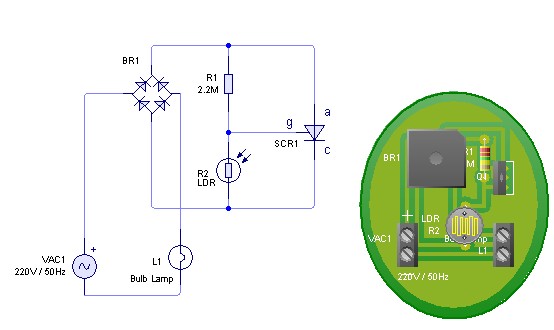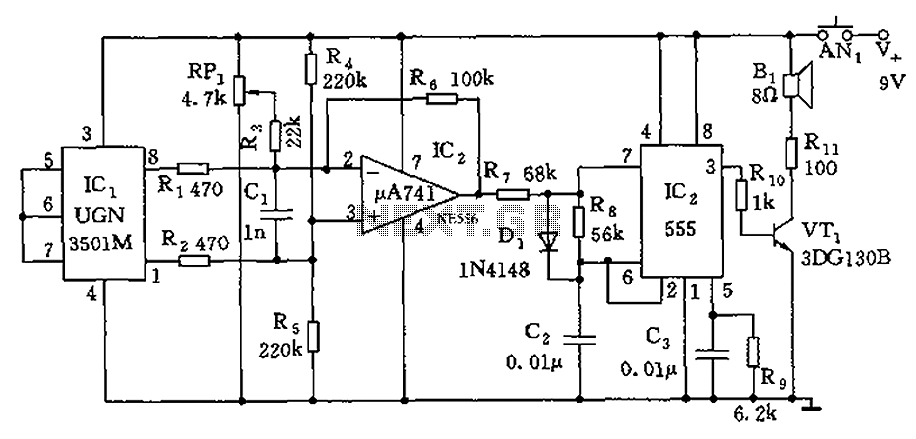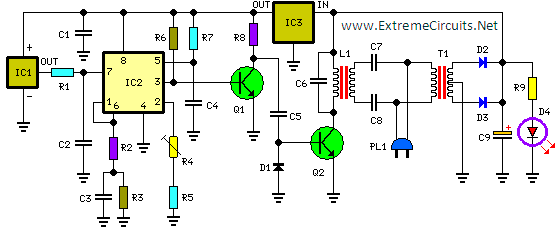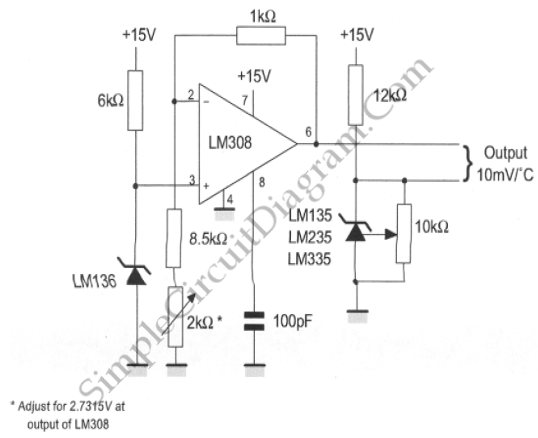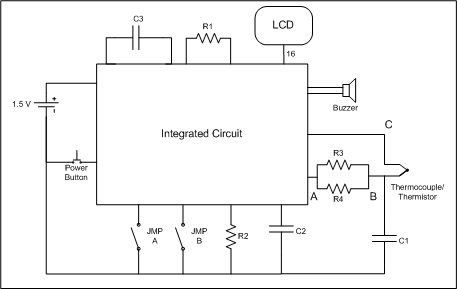
Electronic thermometer
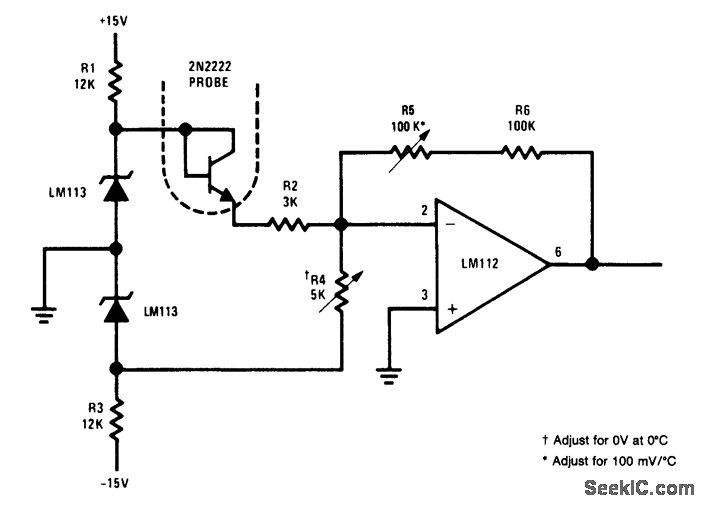
This simple circuit is an electronic thermometer that utilizes an inexpensive silicon transistor (2N2222) as the temperature sensor. The circuit provides an accuracy of better than 1°F over a 100°F range. An LM113 diode regulates the input voltage to 1.2 V. The 1.2 V is applied through resistor R2 to establish the operating current of the temperature-sensing 2N2222. Resistor R4 biases the amplifier output to achieve zero output at 0°F, while feedback resistor R5 calibrates the output scale factor to 100 mV/°F. Once the output is zeroed, the scale factor remains unchanged.
This electronic thermometer circuit is designed to offer a straightforward yet effective solution for temperature measurement. The use of the 2N2222 silicon transistor as a temperature sensor is notable for its cost-effectiveness and availability. The transistor operates in the active region, where its base-emitter voltage varies with temperature, allowing it to function as a reliable sensor.
The LM113 diode plays a critical role in stabilizing the circuit by regulating the input voltage to a constant 1.2 V. This regulation is essential for maintaining consistent performance across varying environmental conditions. The application of this voltage through resistor R2 is crucial for setting the appropriate operating current for the 2N2222 transistor, ensuring that the sensor operates within its optimal range.
Resistor R4 is strategically implemented to bias the amplifier output at zero volts when the temperature is at 0°F. This zeroing process is vital for accurate temperature readings, as it establishes a baseline reference point. The feedback resistor R5 is then used to calibrate the output scale, converting the temperature readings into a voltage output of 100 mV/°F. This linear relationship simplifies the interpretation of the output signal, making it easier to interface with analog-to-digital converters or display systems.
The design ensures that once the output is zeroed, the scaling factor remains consistent, providing reliable temperature measurements without the need for recalibration. The circuit's simplicity and effectiveness make it suitable for various applications where temperature monitoring is required. Overall, this electronic thermometer circuit exemplifies an efficient use of basic electronic components to achieve precise temperature sensing.This very simple circuit is an electronic thermometer using an inexpensive silicon transistor (2N2222) as the temperature sensor or probe. The circuit provides better than 1ƒ accuracy over a 100ƒ range. An LM113 diode regulates the input voltage to 1. 2 V. The 1. 2 / is applied through R2 to set the operating current of the temperatu re-sensing 2N2222. R4 biases the amplifier output for zero output at 0ƒ, while feedback resistor R5 calibrates the output scale factor to 100 mV/ƒ. Once the output is zeroed, the scale factor does not change the zero. National Semiconductor Linear Applications Handbook 1991, p 171. 🔗 External reference
This electronic thermometer circuit is designed to offer a straightforward yet effective solution for temperature measurement. The use of the 2N2222 silicon transistor as a temperature sensor is notable for its cost-effectiveness and availability. The transistor operates in the active region, where its base-emitter voltage varies with temperature, allowing it to function as a reliable sensor.
The LM113 diode plays a critical role in stabilizing the circuit by regulating the input voltage to a constant 1.2 V. This regulation is essential for maintaining consistent performance across varying environmental conditions. The application of this voltage through resistor R2 is crucial for setting the appropriate operating current for the 2N2222 transistor, ensuring that the sensor operates within its optimal range.
Resistor R4 is strategically implemented to bias the amplifier output at zero volts when the temperature is at 0°F. This zeroing process is vital for accurate temperature readings, as it establishes a baseline reference point. The feedback resistor R5 is then used to calibrate the output scale, converting the temperature readings into a voltage output of 100 mV/°F. This linear relationship simplifies the interpretation of the output signal, making it easier to interface with analog-to-digital converters or display systems.
The design ensures that once the output is zeroed, the scaling factor remains consistent, providing reliable temperature measurements without the need for recalibration. The circuit's simplicity and effectiveness make it suitable for various applications where temperature monitoring is required. Overall, this electronic thermometer circuit exemplifies an efficient use of basic electronic components to achieve precise temperature sensing.This very simple circuit is an electronic thermometer using an inexpensive silicon transistor (2N2222) as the temperature sensor or probe. The circuit provides better than 1ƒ accuracy over a 100ƒ range. An LM113 diode regulates the input voltage to 1. 2 V. The 1. 2 / is applied through R2 to set the operating current of the temperatu re-sensing 2N2222. R4 biases the amplifier output for zero output at 0ƒ, while feedback resistor R5 calibrates the output scale factor to 100 mV/ƒ. Once the output is zeroed, the scale factor does not change the zero. National Semiconductor Linear Applications Handbook 1991, p 171. 🔗 External reference
Warning: include(partials/cookie-banner.php): Failed to open stream: Permission denied in /var/www/html/nextgr/view-circuit.php on line 713
Warning: include(): Failed opening 'partials/cookie-banner.php' for inclusion (include_path='.:/usr/share/php') in /var/www/html/nextgr/view-circuit.php on line 713

